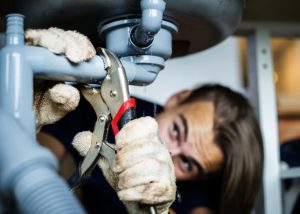Identify Invisible Water Line Leaks: 6 Effective Hacks
ArticleWe have stumbled upon this great article relating to Top leak detection hacks directly below on the web and decided it made perfect sense to write about it with you on this site.

Early detection of dripping water lines can reduce a potential catastrophe. Some little water leakages might not be noticeable.
1. Take A Look At the Water Meter
Inspecting it is a proven way that assists you discover leaks. If it relocates, that suggests a fast-moving leakage. This indicates you might have a slow leak that could even be underground.
2. Examine Water Intake
Assess your water bills and track your water intake. As the one paying it, you must see if there are any type of discrepancies. If you detect sudden changes, despite your consumption being the same, it indicates that you have leaks in your plumbing system. Bear in mind, your water expense must drop under the exact same range on a monthly basis. A sudden spike in your bill indicates a fast-moving leakage.
Meanwhile, a constant increase monthly, despite having the same practices, reveals you have a slow-moving leak that's additionally gradually intensifying. Call a plumber to extensively examine your home, especially if you feel a warm location on your flooring with piping beneath.
3. Do a Food Coloring Examination
When it comes to water consumption, 30% comes from bathrooms. If the color somehow infiltrates your dish throughout that time without flushing, there's a leakage in between the container and bowl.
4. Asses Exterior Lines
Don't fail to remember to examine your exterior water lines as well. Examination spigots by connecting a yard tube. Needs to water permeate out of the connection, you have a loosened rubber gasket. Replace this and make certain all connections are limited. It will certainly help obtain it expertly took a look at as well as kept every year if you have actually obtained a sprinkler system. One little leak can throw away tons of water and surge your water expense.
5. Analyze the circumstance and inspect
Home owners must make it a practice to inspect under the sink counters and even inside closets for any kind of bad odor or mold and mildew development. These two red flags suggest a leakage so punctual interest is called for. Doing routine assessments, also bi-annually, can conserve you from a significant problem.
Examine for stainings and also deteriorating as a lot of devices and also pipelines have a life expectations. If you suspect leaking water lines in your plumbing system, don't wait for it to escalate.
Early detection of dripping water lines can mitigate a potential calamity. Some small water leaks might not be visible. Examining it is a guaranteed means that aids you find leaks. One little leakage can lose lots of water and increase your water bill.
If you believe leaking water lines in your plumbing system, do not wait for it to intensify.
How to Know If Your Home Has a Hidden Leak
Water Meter Reveals Inexplicable Water Usage
If you’d like to test whether or not there’s a leak somewhere in your home, you can do this using your water meter. Here is how to conduct the test:
Don’t use any water in your home for at least 30 minutes; this also means not turning on faucets or water-using appliances.
Go outside, and check your water meter for activity.
If your water meter shows that there was activity, even though no one was using any water, this proves that there is a leak in your home.Visible Mold or Mildew Growth
Leaks behind walls create moist, dark environments that allow mold and mildew to grow and thrive. Eventually, you might see mold growth forming on the wall closest to a hidden leak.
If mold is growing in an area that receives a high amount of moisture, such as a bathroom, it may simply be an indication that better ventilation is needed. However, if you see mold growth on a wall or the ceiling in an area where you would not expect, you probably have a hidden leak.
Musty, Mildew Odor
Sometimes you might not be able to see the mold or mildew that is growing as a result of a leak. However, the smell can give the problem away just as easily. If you catch a whiff of something musty, there’s a good chance that old water is collecting somewhere in your home that you can’t see.
Stained/Warped Walls, Ceilings, or Floors
When your home soaks up water, a variety of red flags can become visible, including ceiling stains, bubbling drywall, warped walls, and sagging floors. While these issues can be caused by excess humidity, they can also be signs that a pipe or plumbing connection has started leaking behind your walls.
Inexplicably High Water Bill
After a while, you get a general sense for what your water bill should be. If you own a pool or sprinkler system, your bill will tend to be higher during summer. However, if you receive a water bill that seems especially high, and you can’t figure out what caused it, then you may have a hidden leak somewhere that’s increasing your bill.
https://www.plumbingjoint.com/blog/2019/july/how-to-know-if-your-home-has-a-hidden-leak/

As a devoted person who reads on Detecting hidden plumbing leaks, I figured sharing that excerpt was sensible. Sharing is caring. You just don't know, you could be helping someone out. I take joy in reading our article about Leaking water lines.
Act now!